Explore the different types of Jade plants. Learn about popular varieties, their unique features, and essential care tips to keep them thriving in your home or garden.
Jade plants are popular succulents that many people love to grow. They’re easy to care for and can live for a long time. There are many types of Jade plants, each with its own special look. In this guide, we’ll talk about some common Jade plant types and how to take care of them.
What are Jade Plants?
Jade plants are succulents that come from South Africa. They’re part of the Crassula family. People often call them money plants or lucky plants. Jade plants have thick, fleshy leaves and strong stems. They can grow into small trees if you take good care of them.
Popular Types of Jade Plants
There are many kinds of Jade plants. Here are some that people like to grow:
1. Common Jade (Crassula ovata)
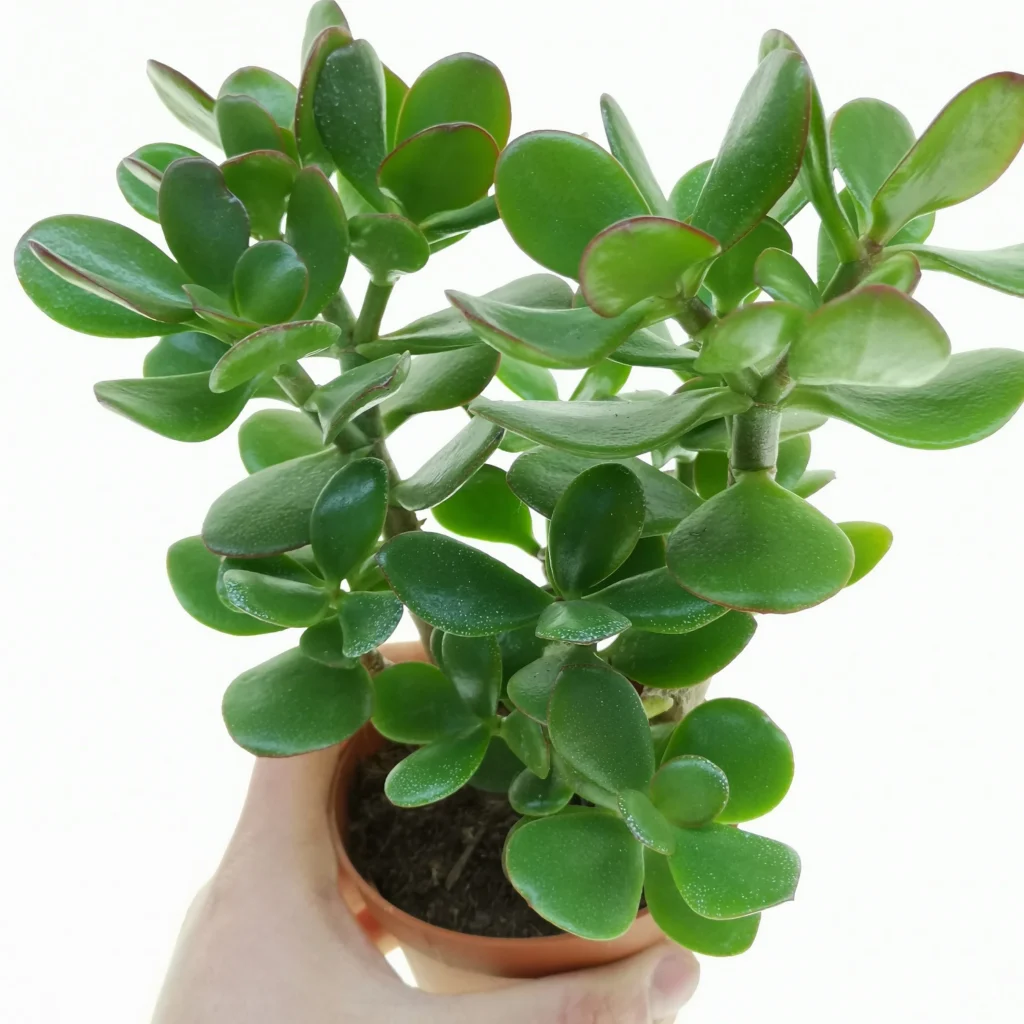
This is the Jade plant most people know. It has:
- Oval, green leaves
- Thick, woody stems
- Small white or pink flowers in the right conditions
Common Jade is great for beginners. It’s tough and can handle some neglect.
2. Variegated Jade (Crassula ovata ‘Variegata’)
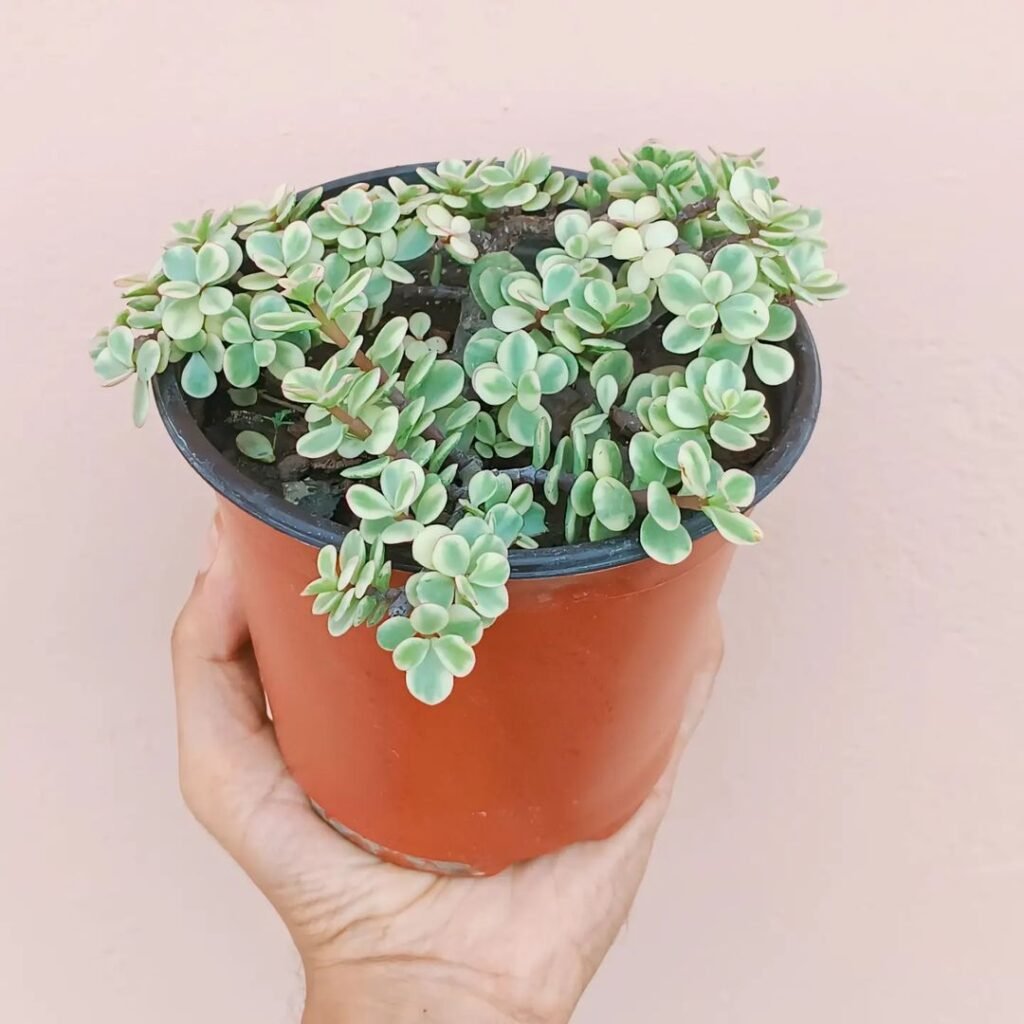
This type looks like the common Jade, but its leaves have cream or yellow stripes. It needs:
- More light than regular Jade
- Less water
- Protection from direct sun
3. Hobbit Jade (Crassula ovata ‘Hobbit’)
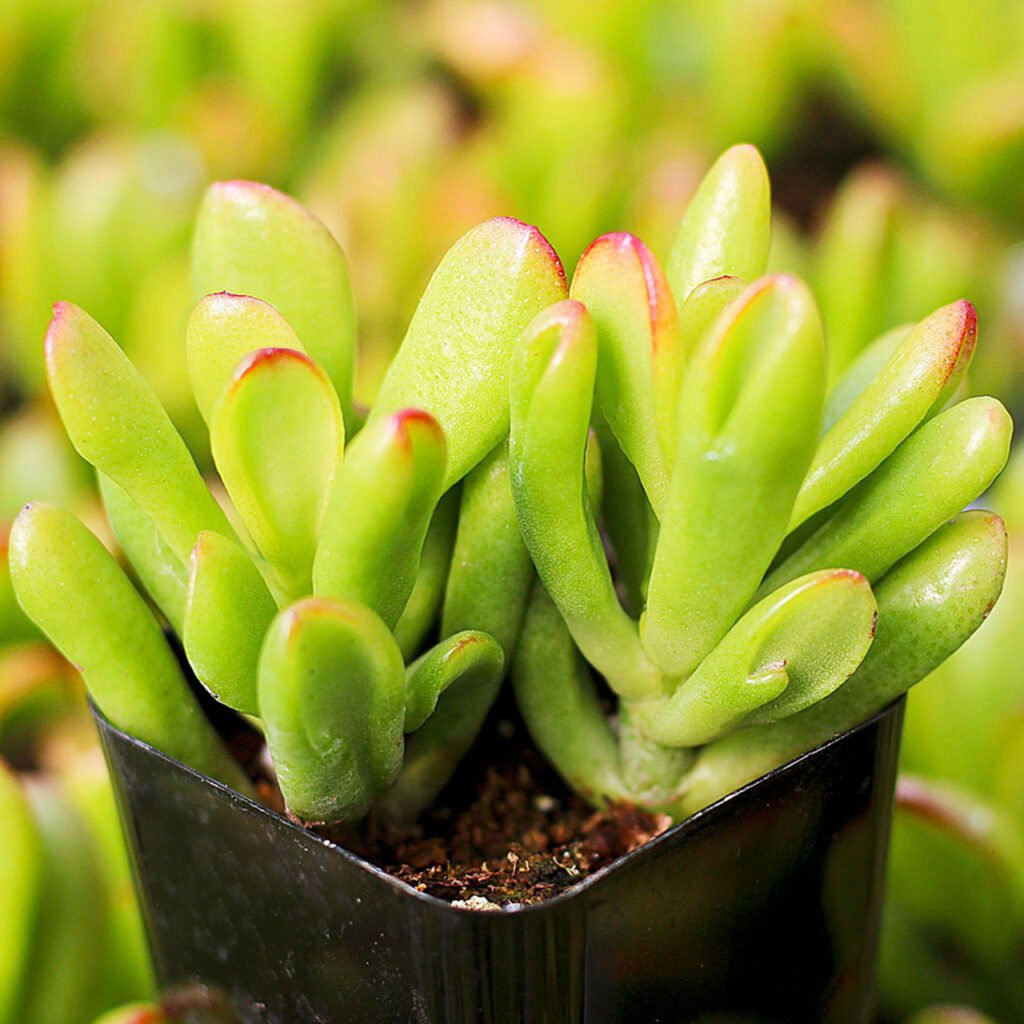
Hobbit Jade has funny-looking leaves. They’re tube-shaped and curl at the ends. This plant:
- Grows slower than other Jades
- Needs bright, indirect light
- Makes a great bonsai plant
4. Gollum Jade (Crassula ovata ‘Gollum’)
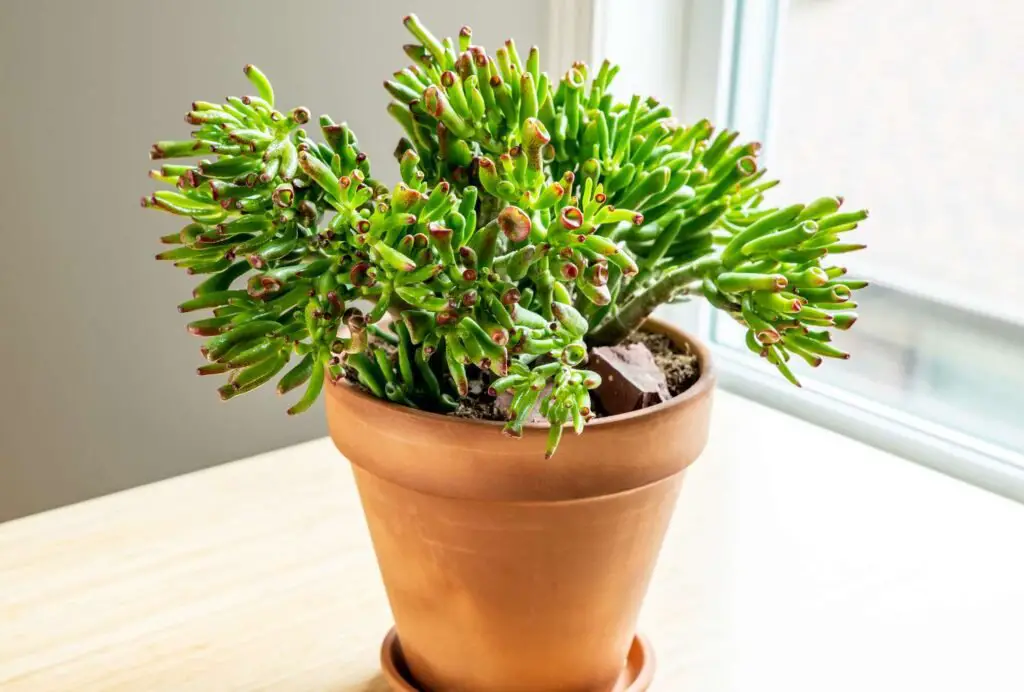
Gollum Jade is like Hobbit Jade, but its leaves are longer and more tube-like. It:
- Can turn red at the tips in bright light
- Needs well-draining soil
- Likes to be in a sunny spot
5. Silver Dollar Jade (Crassula arborescens)
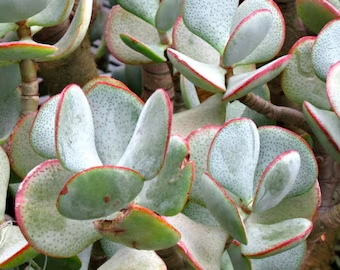
This Jade has round, blue-green leaves. It:
- Can grow quite tall
- Needs lots of light
- Is more sensitive to cold than other Jades
6. Ripple Jade (Crassula arborescens ssp. undulatifolia)
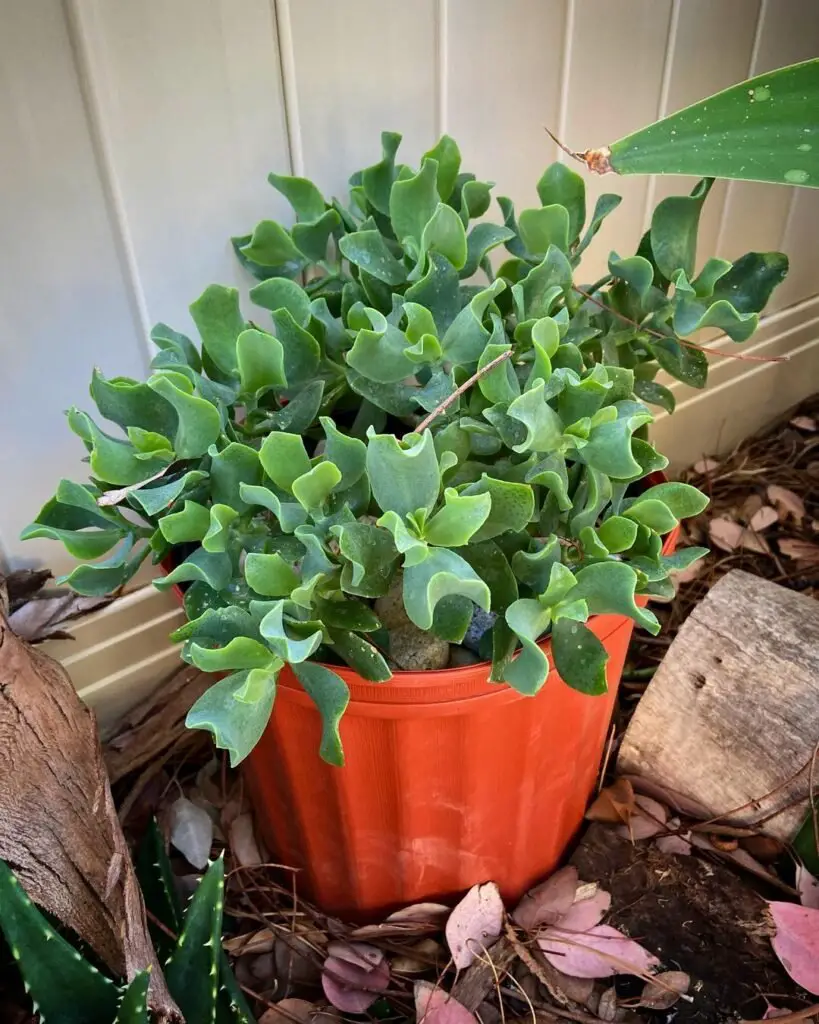
Ripple Jade has wavy-edged leaves. It’s also called:
- Ripple leaf Jade
- Curly Jade This plant likes:
- Bright, indirect light
- Less water than other Jades
How to Care for Jade Plants
Most Jade plants need similar care. Here are some tips to keep your Jade plants healthy:
Light
Jade plants like bright, indirect light. They can handle some direct sun, but too much can burn their leaves. If your Jade doesn’t get enough light, it might grow tall and weak.
Water
Jade plants don’t need much water. They’re succulents, so they store water in their leaves. To water your Jade:
- Wait until the soil is completely dry
- Water deeply, letting water drain out the bottom
- Don’t water again until the soil is dry
Overwatering can hurt Jade plants. It’s better to underwater than overwater.
Soil
Use well-draining soil for Jade plants. You can buy cactus or succulent soil, or make your own by mixing:
- Regular potting soil
- Sand
- Perlite
This mix helps water drain quickly and prevents root rot.
Temperature
Jade plants like warm temperatures. They do best between 65-75°F (18-24°C). They can handle cooler temps, but protect them from frost. If you keep your Jade outside, bring it in when it gets cold.
Fertilizer
Jade plants don’t need much food. You can give them a balanced, water-soluble fertilizer once or twice a year. Only fertilize during the growing season (spring and summer).
Pruning
Prune your Jade plant to:
- Control its size
- Shape it
- Remove dead or damaged parts
Use clean, sharp scissors or pruning shears. The best time to prune is in the spring or summer.
Common Problems and Solutions
Even with good care, Jade plants can have issues. Here are some common problems and how to fix them:
Yellowing Leaves
This often means overwatering. Let the soil dry out completely before watering again.
Dropping Leaves
This can happen if the plant is too cold or isn’t getting enough water. Move it to a warmer spot or water it more often.
Soft, Mushy Stems
This is usually from overwatering and can lead to root rot. Cut back on watering and check the roots. Remove any soft, brown roots and repot in fresh soil.
Pest Problems
Jade plants can get mealybugs or spider mites. Wipe the leaves with rubbing alcohol to get rid of these pests.
Propagating Jade Plants
It’s easy to make new Jade plants from cuttings. Here’s how:
- Cut a healthy stem or leaf
- Let it dry for a few days
- Plant it in well-draining soil
- Water lightly
In a few weeks, you’ll see roots growing.
Conclusion
Jade plants are great for both new and experienced plant owners. With so many types to choose from, you’re sure to find one you like. Remember, Jade plants are tough but they still need the right care. Give them enough light, don’t overwater, and protect them from cold. With a little attention, your Jade plant can be a beautiful, long-lasting part of your home.
Whether you choose a common Jade or a unique variety like Hobbit Jade, these plants can bring a touch of green to any space. Happy growing!
For more gardening tips and plant care guides, visit usagardenhub.com.


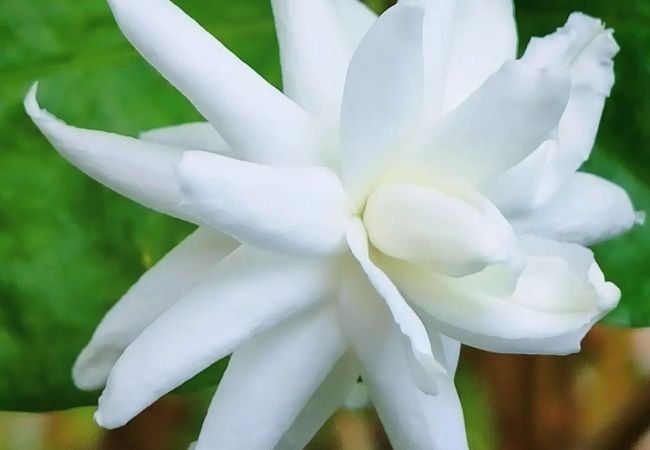




One comment on “Types of Jade Plants : A Guide to Popular Varieties and Their Care”